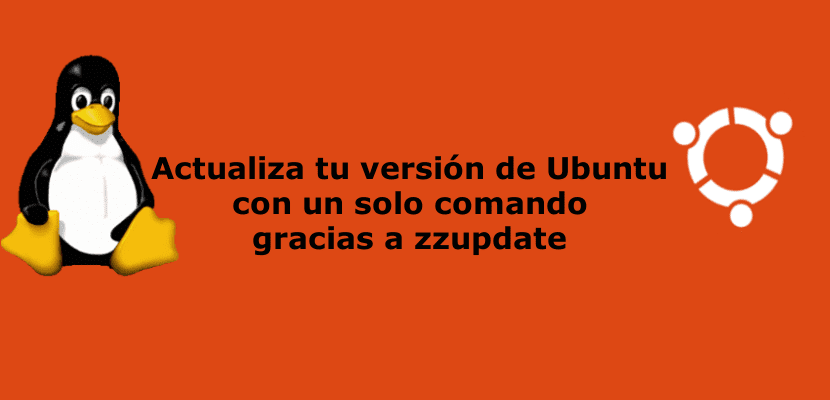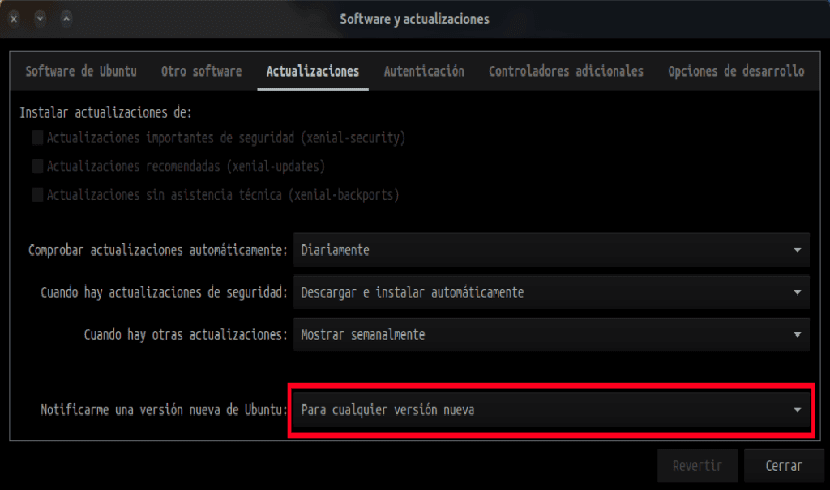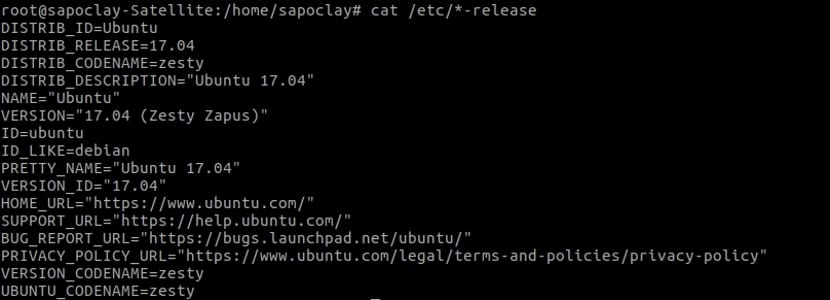
In the next article we are going to take a look at zzupdate. Since I have been an Ubuntu user, updating this operating system has always been very easy. Any user, even beginners can easily upgrade Ubuntu from one version to another and get it right from your first try. Despite its simplicity, there is always someone looking for a way to make things even simpler, and I imagine this is why a developer wrote zzupdate. This is a simple command line utility to fully upgrade an Ubuntu PC / server through apt.
I have tested this application since Ubuntu 16.04 LTS and it has worked well. As all users who use Ubuntu know, this operating system only supports the upgrade from one version to the next, or from one LTS version to the next LTS version. After running the application (as I will detail below) the zzupdate utility updated my Ubuntu 16.04 LTS to Ubuntu 17.04.
I imagine you skipped version 16.10 because it has reached the end of its life. So I don't think it will skip the versions and will directly update any Ubuntu version to the latest stable version available, but this I have not yet been able to check for myself.
General characteristics of zzupdate
- La update is automatic and unattended almost full.
- No user intervention or programming skills are required.
- Es easy to install and use. You just have to download it and start using it.
- Es free and open source. The source code is freely available at GitHub.
The official and recommended way to update any version of Ubuntu To the next available version is to execute the following commands one by one and follow the instructions that will appear on the screen.
Update Ubuntu Desktop
sudo apt-get update && sudo apt-get dist-upgrade
When finished we restart the system. After the reboot, we will continue typing:
sudo update-manager -d
Update Ubuntu Server
sudo apt-get update && sudo apt-get upgrade && sudo apt-get dist-upgrade
At this moment we restart the system and after the restart we write in the terminal:
sudo do-release-upgrade -d
Install zzupdate
However, it is not necessary to run all of these commands to update Ubuntu. Zzupdate updates any version of Ubuntu in a single command.
The first and essential thing will be to download the "zzupdate" utility using the command in the terminal (Ctrl + Alt + T):
curl -s https://raw.githubusercontent.com/TurboLabIt/zzupdate/master/setup.sh | sudo sh
Next, we will only have to execute the following command to update Ubuntu:
sudo zzupdate
The output of the previous command will show us something like the following:

It's that easy. You don't need to do anything other than accept the update. Zzupdate will take care of everything and it will update your current Ubuntu version to the next available version.
Note for those updating Ubuntu Desktop 16.04 LTS:
Ubuntu 16.04 LTS is the long-term support version. So it will only look for the next available LTS version, which is Ubuntu 18.04 LTS version, but it has not been released yet, so zzupdate will not update your system. If you want to update Ubuntu 16.04 LTS to any available version (LTS or normal), open Software & Updates.

Next, click on the drop-down box that says "Notify me of a new version of Ubuntu" under the Updates tab and select "For any new version." Then click Close.
After all the above, run the following command to start the update process:
sudo zzupdate
It's that easy. You don't need to do anything. zzupdate will take care of everything and update your current Ubuntu version to the next available version.
These are the details of my Ubuntu system after updating:

Configure zzupdate
zzupdate works fine as and how it gets to the user, however user may want to change some parameters (eg to exclude reboot, etc). This can be done by modifying the configuration file. To make the modification we will have to copy the default configuration file. We open the terminal (Ctrl + Alt + T) and write:
sudo cp /usr/local/turbolab.it/zzupdate/zzupdate.default.conf /etc/turbolab.it/zzupdate.conf
Now we are going to edit the configuration file:
sudo vi /etc/turbolab.it/zzupdate.conf
At this point, the parameters can be modified according to the needs of each one. Here is the list of available parameters.
- REBOOT - If the value is 1, the system will reboot at the end of the update process. The predetermined value is 1.
- REBOOT_TIMEOUT - Indicates the default timeout value. The default is 15.
- VERSION_UPGRADE - If the value is 1, run the version progression if a new version of Ubuntu is available.
- VERSION_UPGRADE_SILENT - When the value is 1, the version progression occurs automatically, without prompting the user for anything. The default is 0.
- COMPOSER_UPGRADE - If the value is 1, it automatically updates the composer.
By default, we execute "zzupdate" to update Ubuntu with default parameters. We can also create different profiles with specific parameters.
Good data, but for the moment I prefer to continue with the updates to version 16.04 which works very well on my laptop. This command might be interesting for me when the support for this version finally ends so that I can move to the latest LTS version at that time.
Also valid for Linux mint?
On the page Github they only talk about Ubuntu and Ubuntu server. I have only tested it on Ubuntu 16.04. Salu2.
Seriously oooo ???
I've been using Ubuntu for a while now and I didn't know it, just try it to see what it does
version 17, when starting (only sometimes) the desktop icons appear duplicated. Help
I forced the update from 16.04 to 17.04 and it got corrupted. Better to leave 16.04 as is.
Well, even today I have updated another Ubuntu 16.04 to 17.04 (64bits) using this program. I have already tried it with Gnome-shell and Unity and with both it has worked correctly. I am sorry that for your case the update has not been satisfactory. Salu2.